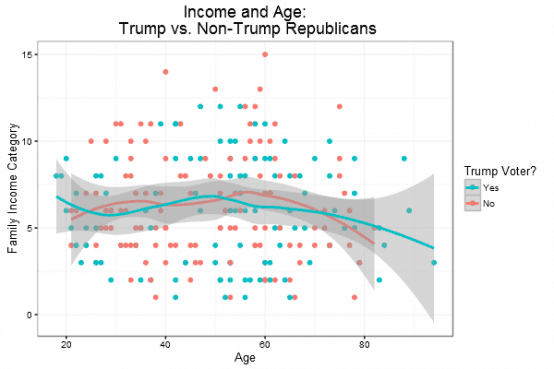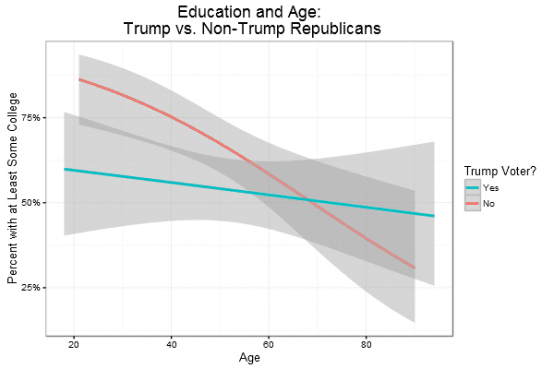Who’s Supporting Donald Trump?

Last week, data guru Nate Silver had an interesting analysis of Donald Trump’s supporters, arguing that they are not as “working class” as many think.
My initial reaction was the same as (my former roommate) Michael Brendan Dougherty’s. He explains in The Week:
Household income numbers are not all that revealing. If you wanted to guess whether the residents of certain houses were obese, you’d want to know more than the total weight of human flesh domiciled in a given house. You’d want the divisors, like number of humans. You’d want other qualifying data, like their ages. The very numbers that would tell us most about the relative strain on a household income [aren’t] available in the exit data Nate Silver uses.
We know that voters generally have higher incomes than non-voters, that primary electorates have higher incomes than general election voters, and that Republicans tend to have higher household incomes than Democrats. But data from previous elections also tells us that Republican voters tend to be older than Democrats. They are more likely to be married and more likely to have more children.
Unfortunately, as Dougherty notes, as of today it’s fairly difficult to get data you can slice up in all these various ways, unless you happen to work for a polling organization. But there is one source: In January, American National Election Studies and YouGov interviewed 1,200 people online about the primary, and the individual-level results are available if you register for free.
Horserace analysis isn’t my strong suit, and I majored in journalism, so I won’t pretend to have the final answer as to what these data reveal. You can see some tentative analysis on my Twitter feed, but here are two charts I made that I found especially interesting.
I started by restricting the data to self-identified Republicans who (A) chose a candidate from the provided list and (B) said they would probably vote, and then categorized them as “Trump” and “Not Trump” voters. This is about 250 people, more than 100 of them Trump supporters.
Here is how those voters shake out in terms of age and family income. (The incomes are categories—for example, “3” is really $20,000-29,999—and I excluded a few outliers with very high values.) I was surprised to see so little income difference even after taking age into account.
And for this chart, I categorized people according to whether they reported at least some college. Here there’s a pronounced difference, but only among those in their 20s through 40s.
Again, I’m mainly putting this out there to draw attention to the data, which deserve much more careful analysis, and I’m not claiming to have all the answers. As Dougherty writes, “It is important to get this right.”
Robert VerBruggen is managing editor of The American Conservative. Twitter: @RAVerBruggen

